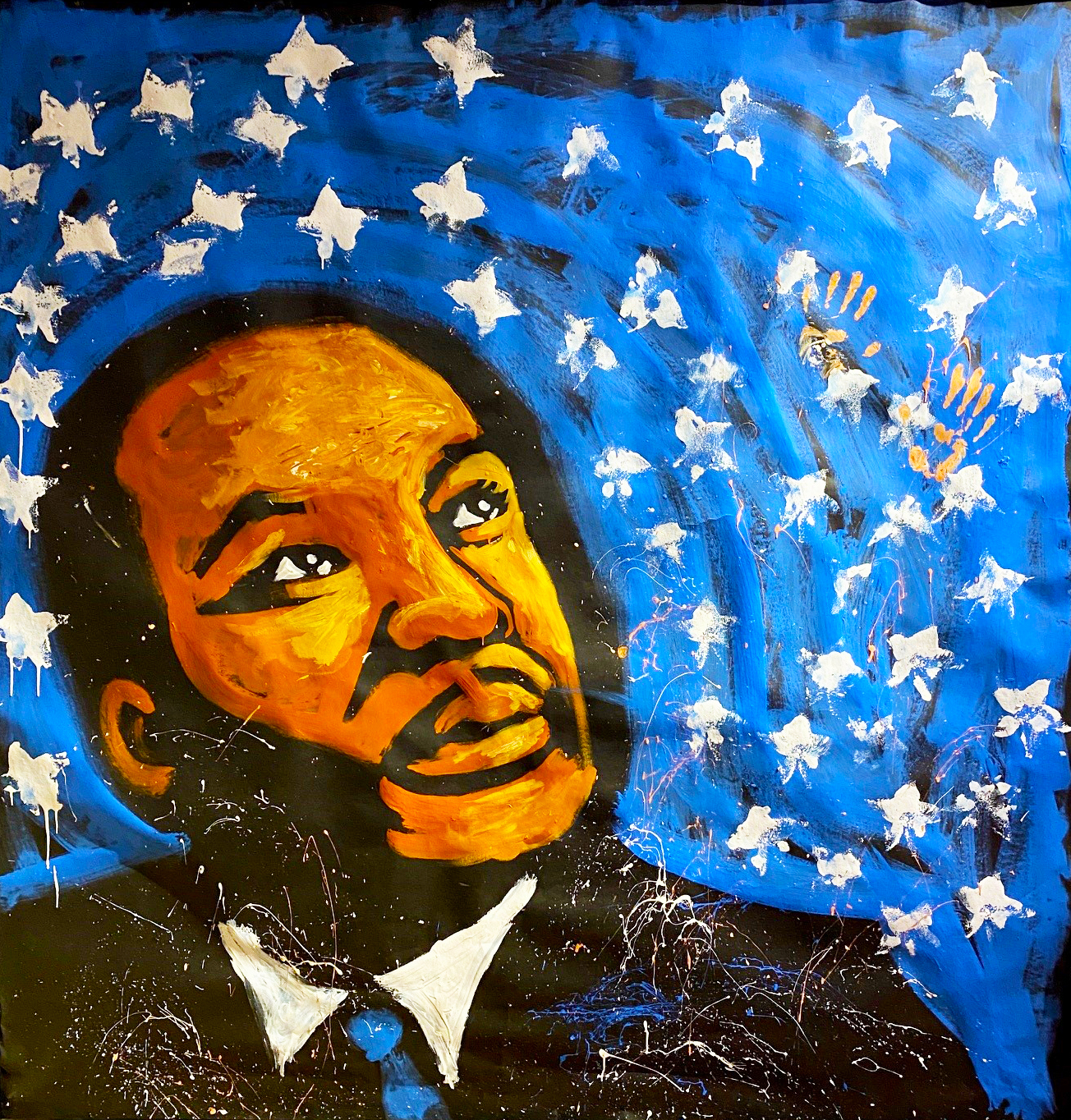
Carnegie Hall announces a new capsule exhibit, Civil Rights and Peace, celebrating Black History Month in the Museum Gallery Alcove (adjacent to the Hamilton Auditorium).The exhibit is free and open to the public, Monday through Friday, 10 a.m. to 4 p.m., and runs through the end of February.
The exhibit features photography by Builder Levy, an Artrageous painting of Martin Luther King, Jr., and interesting information on the 1963 March on Washington. The photography is from the Civil Rights and Peace Collection from Builder Levy: Photographer (2005).
On Aug. 28, 1963, a quarter of a million people rallied in Washington, DC, for the March on Washington for Jobs and Freedom to demand an end to segregation, fair wages and economic justice, voting rights, education, and long overdue civil rights protections.
Highlighting photos that were taken in Washington, DC, during the March, where MLK, Jr. famously gave his I Have a Dream Speech, the exhibit focuses on the process of civil disobedience through the right of peaceful assembly, which was successful in pressuring the administration of John F. Kennedy to initiate a strong federal civil rights bill in Congress.
Builder Levy taught in the New York City public school system for 34 years. Most of that time he spent working in black and Hispanic neighborhoods, where he encountered rich cultures and warm family life. But that was not how those neighborhoods were portrayed in most of the published images he saw – so he photographed them himself when he was not at work.
“I looked at my photographs as a counter to the racist depictions the mass media had of the very students I was teaching,” he said.
Though he rarely photographed professionally, his images of the New York neighborhoods where he worked and lived are now collected widely by various institutions, including the Smithsonian National Museum of African American History and Culture, the International Center of Photography, and the Museum of the City of New York. Along with some of his images of political protests from 1962 through the late 1980s, they are compiled in a new, somewhat autobiographical book, “Builder Levy: Humanity in the Streets,” published by Damiani.
For as long as he can remember, Mr. Levy wanted to help make a “more socially and economically just world,” he said. Weaned on the progressive ideals of his parents, who were steeped in leftist politics during the McCarthy era, he became an activist as a teenager. As a student at Stuyvesant High School in Manhattan, he circulated a petition in 1957 calling for school desegregation and joined a civil rights march on Washington.
Later, after taking a photography class while studying art at Brooklyn College, Mr. Levy started bringing a camera along as he and his friends protested and picketed over both national and local home of his images from a protest of de facto school segregation in New York were published in Freedomways magazine, a leading African American political and cultural periodical.
Even as his life changed, Mr. Levy would always pursue photography in his spare time. After starting his career as a teacher, he continued to document protests, and photographed coal miners in Appalachia during summer vacations between 1968 to 2009. He also set up photography workshops with teenagers in the Lower East Side, Bushwick and Ocean Hill-Brownsville, asking his students to photograph in their neighborhoods and in their homes.
For more information, please visit carnegiehallwv.org, call 304-645-7917, or stop by the Hall at 611 Church Street, Lewisburg. Carnegie Hall programs are presented with financial assistance through a grant from the West Virginia Department of Arts, Culture and History and the National Endowment for the Arts, with approval from the West Virginia Commission on the Arts.


